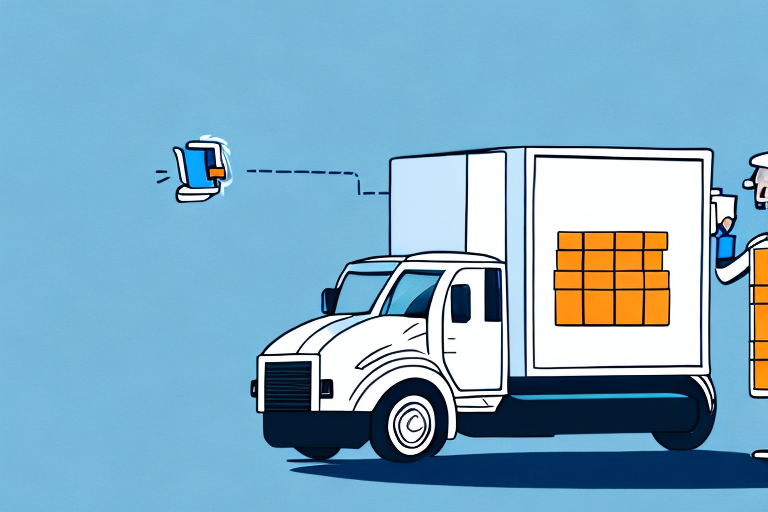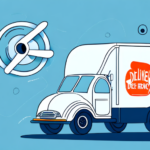What Is POD in Shipping? A Comprehensive Guide
In the shipping industry, POD stands for Proof of Delivery. It is a crucial document that verifies the delivery of goods from the shipper to the receiver. This guide explores the significance of POD, its evolution, benefits, implementation strategies, and future trends, providing a detailed understanding of its role in modern shipping operations.
The Importance and Benefits of POD in the Shipping Industry
POD is essential for both shippers and receivers as it serves as undeniable evidence that the goods have been delivered successfully. Here are the key benefits of using POD in shipping:
Enhanced Transparency
With POD, all parties have access to delivery information, allowing for real-time tracking of shipments. This transparency reduces the chances of errors and ensures timely deliveries.
Increased Accountability
Both the shipper and receiver must sign the POD, establishing accountability and minimizing disputes over delivery issues.
Cost Reduction
POD helps in avoiding unnecessary expenses such as re-delivery fees or losses due to undelivered goods, ultimately saving costs for businesses.
Legal Protection
POD serves as a legal document in case of disputes, ensuring that there is concrete evidence of delivery, which can be crucial in resolving conflicts.
The Evolution of POD Systems and Technological Advancements
The process of capturing and managing POD has significantly evolved over time, transitioning from manual paper-based systems to advanced digital solutions.
History of POD
Originally, POD was a manual process involving paper documents that required physical signatures upon delivery. This method was time-consuming and prone to errors.
Modern POD Systems
Today's POD systems are predominantly digital, utilizing mobile devices and electronic signatures. This shift has improved efficiency, accuracy, and data management in shipping processes.
Types of POD Systems
- Electronic POD (ePOD): Utilizes digital devices to capture delivery information and signatures electronically.
- GPS-based POD: Incorporates GPS technology to track the location of delivery vehicles in real-time.
- Image-based POD: Uses cameras to capture images of delivered goods and signatures for verification.
- Real-time POD: Provides instant updates on delivery status, allowing for immediate notifications and tracking.
Each type offers unique advantages, and businesses can choose based on their specific needs and technological capabilities.
Implementing a POD System in Your Shipping Business
Adopting a POD system requires strategic planning and execution to ensure it aligns with your business operations. Here are the steps to implement an effective POD system:
Choosing the Right POD System
Select a system that fits your business size, budget, and operational requirements. Consider factors like scalability, compatibility with existing software, and user-friendliness.
Training Your Staff
Ensure that all personnel involved in the shipping process are adequately trained to use the POD system effectively. Proper training minimizes errors and enhances system utilization.
Integration with Shipping Software
Integrate the POD system with your existing shipping and logistics software to streamline operations and ensure seamless data flow across platforms.
Setting Up Data Security Measures
Implement robust data security protocols to protect sensitive delivery information and maintain the integrity of POD records.
According to a study by Supply Chain Digital, businesses that effectively implement POD systems can achieve up to a 20% increase in delivery accuracy and customer satisfaction.
Challenges and Solutions in Implementing a POD System
While the benefits of POD systems are significant, businesses might encounter several challenges during implementation. Addressing these challenges proactively is essential for a successful POD integration.
Staff Resistance
Employees may resist adopting new technologies due to a lack of familiarity or fear of change. Providing comprehensive training and highlighting the system's benefits can mitigate resistance.
Data Security Concerns
Protecting sensitive delivery information is paramount. Implementing strong encryption, access controls, and regular security audits can enhance data security.
Technical Difficulties
Issues such as software bugs or hardware malfunctions can disrupt POD operations. Ensuring reliable technical support and regular maintenance can help overcome these problems.
Cost of Implementation
Initial setup costs for advanced POD systems can be high. However, the long-term savings and efficiency gains often justify the investment.
Research from the IBM Supply Chain Management indicates that businesses can recover their investment in POD systems within the first year through cost savings and improved operational efficiency.
Future Trends and Innovations in POD
The POD landscape is continuously evolving with the advent of new technologies and innovative practices, shaping the future of shipping and logistics.
Artificial Intelligence and Machine Learning
AI and machine learning algorithms can predict delivery times more accurately, optimize delivery routes, and enhance decision-making processes in POD systems.
Blockchain Technology
Blockchain offers a decentralized and immutable ledger for POD data, increasing transparency and security while preventing fraud and data tampering.
Internet of Things (IoT)
IoT devices can provide real-time data on shipment conditions, such as temperature and humidity, ensuring the safe delivery of sensitive goods.
Automated Delivery Systems
Autonomous vehicles and drones are becoming integral parts of the delivery process, potentially reducing delivery times and operational costs.
Case Studies: Successful Implementation of POD Systems
Several leading companies have successfully integrated POD systems into their operations, reaping substantial benefits in efficiency and customer satisfaction.
FedEx's Electronic POD System
FedEx utilizes an electronic POD system that has significantly enhanced their delivery accuracy and reduced errors. By implementing ePOD, FedEx has streamlined their delivery confirmation process, leading to faster turnaround times and improved customer trust.
DHL's GPS-based POD System
DHL employs a GPS-based POD system that allows customers to track their shipments in real-time. This system has improved visibility into the delivery process, reduced delays, and enhanced overall customer satisfaction.
According to a DHL report, the implementation of advanced POD systems has led to a 15% improvement in on-time deliveries and a 10% increase in customer retention rates.
Best Practices for Using POD to Improve Your Shipping Business
To maximize the benefits of POD in your shipping operations, adhere to the following best practices:
- Invest in the Right Technology: Choose POD systems that integrate seamlessly with your existing infrastructure and offer scalability as your business grows.
- Comprehensive Staff Training: Regularly train your employees on using the POD system to ensure accurate data capture and utilization.
- Implement Robust Data Security: Protect POD data with encryption, access controls, and regular security assessments to prevent unauthorized access and data breaches.
- Regular Process Reviews: Continuously monitor and evaluate your POD processes to identify areas for improvement and implement necessary changes.
- Engage with Customers: Maintain clear communication channels with customers, providing them with regular updates and addressing their concerns promptly.
By following these best practices, shipping businesses can enhance their operational efficiency, reduce costs, and improve customer satisfaction.
Conclusion: Why Every Shipping Business Needs a Reliable POD System
Proof of Delivery is indispensable in the modern shipping industry, offering enhanced transparency, accountability, and efficiency. By implementing a robust POD system, shipping businesses can minimize disputes, reduce costs, and improve customer satisfaction. As technology continues to advance, adopting innovative POD solutions will be crucial for staying competitive and meeting the evolving demands of the logistics landscape.




















